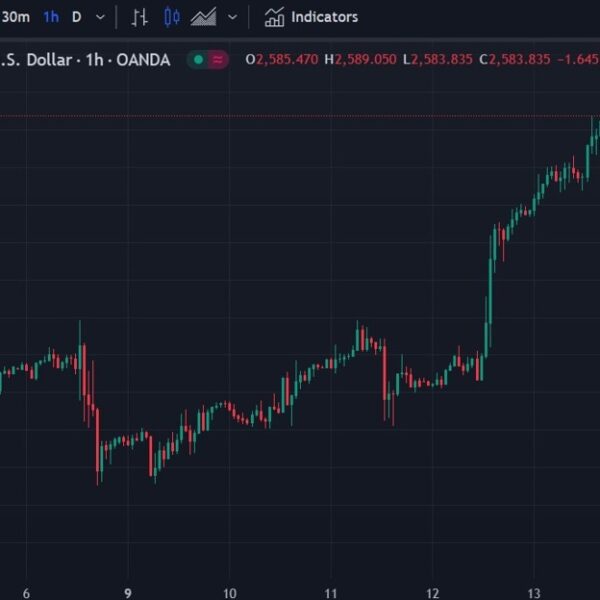
- The U.S. and China are set to begin trade talks in Geneva, Switzerland. Both sides will first want to make sure the other is serious about negotiating a future deal. Possible topics for discussion include lowering the current tariff rates of more than 100% and a litany of non-tariff trade barriers.
This weekend’s trade talks between the U.S. and China are an opening salvo in what is shaping up to be long and drawn-out negotiations between the world’s two largest economies.
Delegations from both countries are set to meet in Geneva, Switzerland, over the weekend for the first time since trade tensions escalated to fever pitch last month. After announcing widespread tariffs on virtually all of its trading partners, the U.S. then backtracked, pausing them for every country except China, which was singled out with 145% tariffs. China immediately responded with its 125% tariffs on U.S. imports.
Part of the impetus for the talks was a mutual recognition that the current tariff levels had severely limited trade between the U.S. and China.
“The current tariffs on Chinese exports to the U.S. are so high that they essentially shut down direct trade between the countries,” said Wayne Winegarden, senior fellow for economics at the free market think tank the Pacific Research Institute.
The weekend’s trade talks will include Treasury Secretary Scott Bessent, U.S. Trade Representative Jamieson Greer, and China’s vice premier for economic policy He Lifeng.
Both sides have telegraphed the meeting would be focused on easing tensions. Chinese officials framed the summit as an opportunity to “re-engage the U.S,” while on the U.S. side the operative word was “de-escalation.”
Despite the exorbitantly high tariffs the two countries had placed on each, the talks would include several other topics as well.
“De-escalation means reducing these tariffs but also preventing the broadening of this trade war beyond tariffs—we have already seen non-tariff retaliatory measures like rare earths export controls, canceled orders for Boeings, antitrust investigations of Google,” University of Kansas professor Jack Zhang, an expert in the political economy of East Asia, told Fortune. “The danger is for the trade war to threaten other economic linkages beyond trade to flows of investment, technology, or even people.”
But neither side was entirely conciliatory once the talks were agreed to. The U.S. stuck to its message that China was worse off than it was during the trade war. President Donald Trump said his tariffs had left China with “with absolutely no business.”
Meanwhile, Chinese government officials warned the U.S. to negotiate in good faith, with China’s commerce ministry saying the U.S. needed to “show sincerity” during the talks.
“If you say one thing and do another, or even attempt to continue to coerce and blackmail under the guise of talks, China will never agree, let alone sacrifice its principled position and international fairness and justice to seek any agreement,” a ministry statement said.
Different U.S. factions on tariffs
A looming question from the U.S.’s side of the negotiating table is over the role of tariffs themselves. Since Trump took office in January, different factions have emerged among administration officials over the specific purpose tariffs play. One group views tariffs as a central part of a new, more protectionist U.S. trade policy. The other side is composed of more traditional free-traders that see tariffs as a tool to gain leverage during broader trade negotiations with other countries.
“That group seems to be leading trade policy at the moment and is well-represented in the U.S. delegation in Geneva,” said University of Michigan political science professor Iain Osgood, referring to Bessent and Greer’s role in this weekend’s summit.
Regardless of which side wins out, the presence of a disagreement is not without consequences going into a negotiation. “The tendency to see tariffs as a magical means to achieve drastically different strategic ends led to the bargaining failures,” Zhang said.
He added that differences of opinion between members of the delegation made an already challenging negotiation harder because the U.S. can’t commit to a specific set of narrow conditions for lifting tariffs.
How exactly talks will unfold remains to be seen. On Wednesday, Bessent said that during this weekend’s meetings the two sides would decide what to discuss. Some of the possible topics for discussion include export controls on specific products—rare earths from China and semiconductors from the U.S.—and Trump’s decision to end the de minimis loophole, which exempted shipments below a certain value from duties. Topics could also extend beyond trade matters including TikTok’s future ownership, curtailing fentanyl trafficking, and CK Hutchinson’s control of major shipping canals, experts said.
Given that these are some of the very first official conversations, the talks will help establish what the two countries are willing to negotiate. That is a critical initial step, but one that is more likely to yield symbolic gestures rather than concrete resolution to the dispute, according to experts.
“The likely scenario will be for the two sides to signal toughness while gauging the other’s willingness and sincerity to engage in serious negotiations,” Zhang said.
This story was originally featured on Fortune.com















